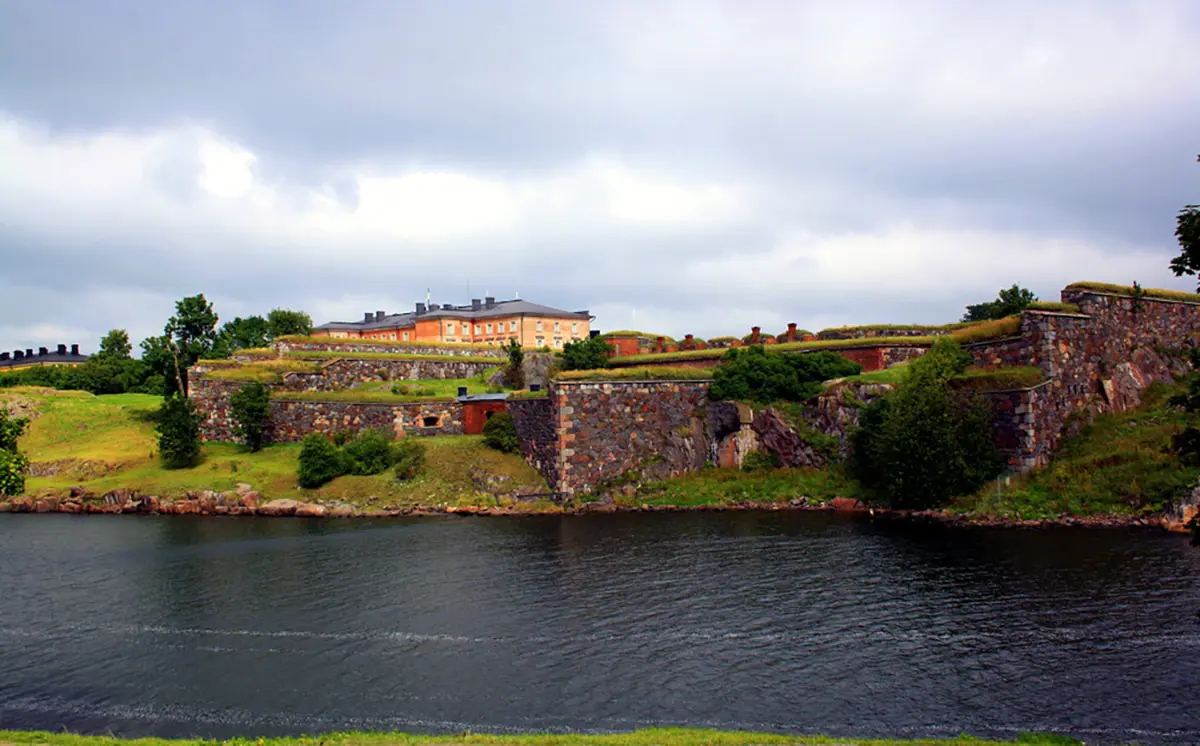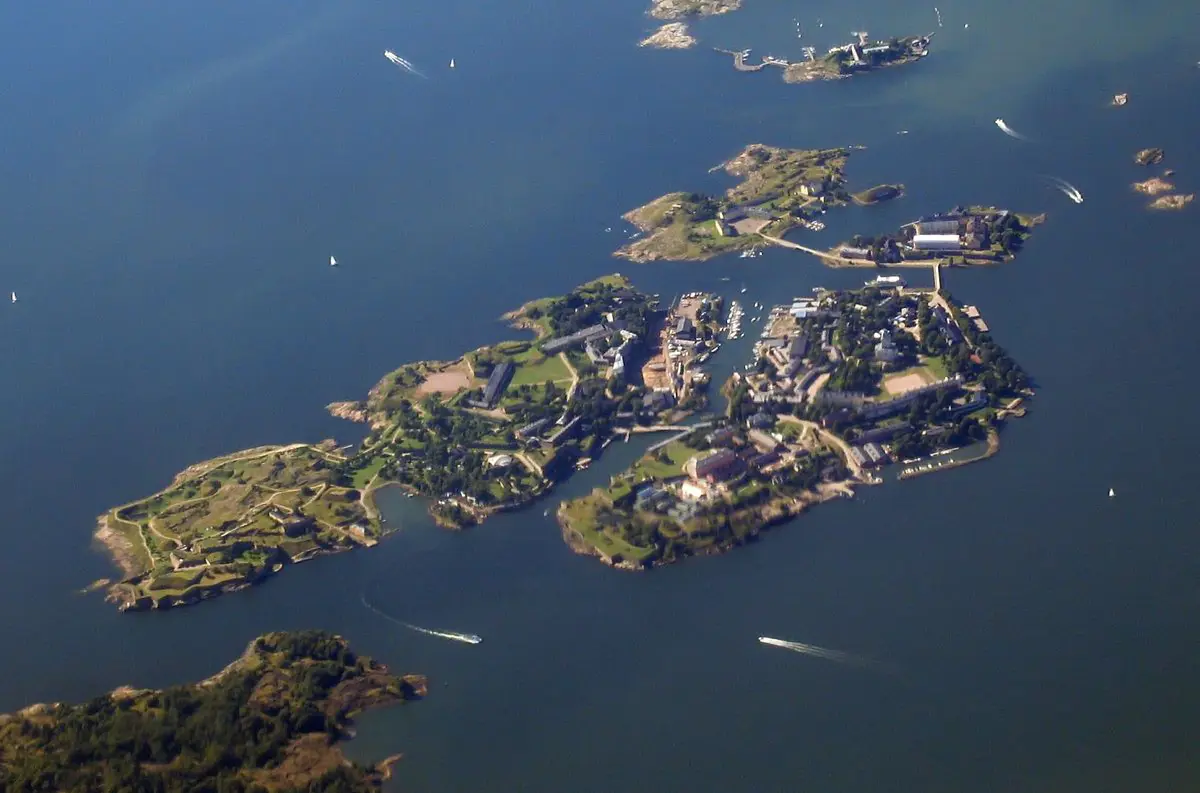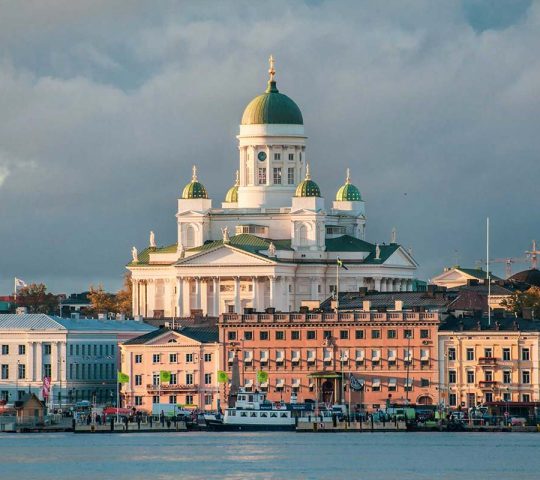Helsinki, Finland’s vibrant capital, boasts a unique treasure – Suomenlinna Fortress. Rising majestically from the sea, this UNESCO World Heritage Site is more than just a historical landmark; it’s a captivating island archipelago offering a fascinating journey through time.
Nestled off the coast of Helsinki, Finland, lies the majestic Sea Fortress Suomenlinna, a UNESCO World Heritage Site and one of the most iconic landmarks in the region. With its rich history, stunning architecture, and picturesque surroundings, Suomenlinna offers visitors a unique glimpse into Finland’s past and present. From its strategic construction to its modern-day appeal, Suomenlinna offers visitors a captivating journey through time.
Exploring the History of Suomenlinna Fortress
Suomenlinna’s story begins in the mid-18th century. Sweden, facing threats from Russia, embarked on an ambitious project to construct a maritime fortress on several islands off Helsinki. Christened Sveaborg (“Swedish Castle”), the fortress was designed to be an impregnable barrier protecting the city. Construction continued for decades, resulting in an impressive network of fortifications, including ramparts, tunnels, and six massive sea forts.
Shifting Tides of Power
In 1808, the tides of history turned. Russia captured Finland, and Sveaborg became a key Russian military base. The name was changed to Viapori, reflecting its new ownership. Under Russian rule, the fortress underwent further expansion and modernization. However, its true test came during the Crimean War (1853-1856) when a combined British and French force heavily bombarded the fortress, revealing its vulnerabilities.
A Return to Finland
Following Finland’s independence in 1917, the fortress received its modern Finnish name, Suomenlinna. The newly-formed nation used it for military purposes but on a smaller scale. In the latter half of the 20th century, Suomenlinna’s military significance gradually declined.
A Transformation and Rebirth
The 1970s marked a turning point for Suomenlinna. The Finnish military began decommissioning the fortress, opening it up for public exploration. A remarkable transformation took place. Former military buildings were converted into museums, art galleries, restaurants, and cafes. Suomenlinna became a vibrant cultural hub, attracting tourists and locals alike.
Origins and Construction
Suomenlinna, originally known as Sveaborg in Swedish, was built in the mid-18th century by the Swedish crown to defend against Russian expansion. Its construction on a cluster of islands was a remarkable engineering feat of its time.
Strategic Importance
Over the centuries, Suomenlinna served as a military stronghold for various powers, including Sweden, Russia, and Finland. Its strategic location made it a key player in numerous conflicts and battles in the region.
Ownership Changes Over Time
Following Finland’s independence in 1917, Suomenlinna came under Finnish control and was renamed Suomenlinna, meaning “Castle of Finland.” Today, it stands as a symbol of Finnish resilience and national identity.
Architectural Marvels of Suomenlinna
Layout and Design
The fortress’s layout is characterized by sturdy walls, bastions, tunnels, and cannons, all designed to withstand enemy attacks. Its star-shaped design is a testament to its military prowess.
Defensive Structures
Suomenlinna’s defensive structures, including King’s Gate and Great Courtyard, showcase the fortress’s formidable defenses and strategic planning.
Iconic Features
Iconic landmarks such as the Suomenlinna Church and the Jetty Barracks add to the fortress’s charm and historical significance.
Cultural and Tourist Attractions
In addition to its military history, Suomenlinna is home to several cultural and tourist attractions. Visitors can explore museums, art galleries, and exhibitions showcasing the island’s rich heritage and contemporary art scene. Outdoor enthusiasts can enjoy hiking, picnicking, and swimming in the pristine waters surrounding the fortress.
Museums and Exhibitions
Suomenlinna is home to several museums and exhibitions that showcase its rich history, including the Suomenlinna Museum and the Ehrensvärd Museum.
Art and Culture Scene
The fortress’s vibrant art and culture scene feature galleries, studios, and exhibitions highlighting both historical and contemporary Finnish art.
Festivals and Events
Throughout the year, Suomenlinna hosts a variety of festivals and events, including music concerts, theater performances, and outdoor markets, attracting visitors from near and far.
Visitor Information
Getting to Suomenlinna is easy, with regular ferry services departing from Helsinki’s Market Square. Tickets can be purchased at the ferry terminal, and the journey takes approximately 15 minutes. The fortress is open year-round, with varying hours depending on the season.
Getting There
Visitors can reach Suomenlinna by a short ferry ride from Helsinki’s Market Square, making it easily accessible for tourists and locals alike.
Visitor Experience
Once on the island, visitors can explore the fortress’s attractions at their own pace, guided by informative signs and audio guides available in multiple languages.
Amenities and Services
Suomenlinna offers a range of amenities, including cafes, restaurants, and souvenir shops, ensuring a comfortable and enjoyable experience for visitors.
Preservation Efforts
Preservation Initiatives
Preserving Suomenlinna’s cultural and natural heritage is a top priority for Finnish authorities, with ongoing conservation projects and initiatives in place.
Challenges and Solutions
Despite the challenges posed by climate change and increasing tourism, efforts are underway to ensure that Suomenlinna remains intact for future generations to appreciate.
Future Prospects
As one of Finland’s most popular tourist destinations, Suomenlinna continues to attract visitors with its unique blend of history, culture, and natural beauty, promising an exciting future ahead.
Local Cuisine and Dining Options
After exploring the fortress, visitors can indulge in traditional Finnish cuisine at one of the island’s charming restaurants or cafes. From hearty soups and stews to freshly caught seafood, Suomenlinna offers a taste of authentic Finnish flavors in a picturesque setting.
Conclusion
In conclusion, Suomenlinna Fortress stands as a testament to Finland’s rich history and cultural heritage. From its strategic construction to its modern-day appeal, Suomenlinna offers visitors a journey through time and history like no other. Plan your visit today and immerse yourself in the timeless charm of this UNESCO World Heritage Site.
FAQ's
What is Suomenlinna?
Suomenlinna is a historic sea fortress located off the coast of Helsinki, Finland.
How do I get to Suomenlinna from Helsinki?
Visitors can take a ferry from Helsinki's Market Square to Suomenlinna, with regular services operating throughout the day.
Are there guided tours available?
Yes, guided tours led by knowledgeable local guides are available for visitors who want to learn more about Suomenlinna's history and architecture.
Can I visit Suomenlinna in winter?
Yes, Suomenlinna is open year-round, and visitors can explore the fortress in all seasons. However, ferry schedules may vary during the winter months, so it's best to check in advance.
Is Suomenlinna accessible for people with disabilities?
While some areas of Suomenlinna may be challenging to access for people with mobility issues, there are accessible paths and facilities available to ensure that everyone can enjoy the fortress.
How old is Suomenlinna Fortress?
Suomenlinna Fortress was built in the mid-18th century, making it over 250 years old.
Can visitors stay overnight at Suomenlinna?
While there are no hotels on the island, visitors can stay overnight at the Suomenlinna Hostel, which offers affordable accommodation in the heart of the fortress.











